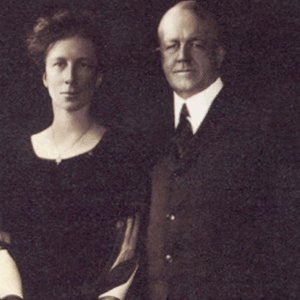Frank and Lillian Gilbreth

While Taylor was conducting his time studies, Frank and Lillian Gilbreth were completing their own work in motion studies to further scientific management. The Gilbreth name may be familiar to anyone who has read the book Cheaper By The Dozen (or seen the movie that the book inspired). The book is a biographical novel about the Gilbreth family, their twelve children, and the often humorous attempts of the Gilbreths to apply their efficiency methods in their own household.
Motion Studies
The Gilbreths made use of scientific insights to develop a study method based on the analysis of work motions, consisting in part of filming the details of a worker’s activities while recording the time it took to complete those activities. The films helped to create a visual record of how work was completed, and emphasized areas for improvement. Secondly, the films also served the purpose of training workers about the best way to perform their work.
This method allowed the Gilbreths to build on the best elements of the work flows and create a standardized best practice. Time and motion studies are used together to achieve rational and reasonable results and find the best practice for implementing new work methods.
Differences in Perspectives
While Taylor’s work is often associated with that of the Gilbreths, there is a clear philosophical divide between the two scientific management theories. Taylor was focused on reducing process time, while the Gilbreths tried to make the overall process more efficient by reducing the motions involved. The Gilbreths saw their approach as more concerned with workers’ welfare than Taylorism, in which workers were less relevant than profit. This difference led to a personal rift between Taylor and the Gilbreths, which, after Taylor’s death, turned into a feud between the Gilbreths and Taylor’s followers.
Modern Influence
Even though scientific management was pioneered in the early 1900s, it continued to make significant contributions to management theory throughout the rest of the twentieth century. With the advancement of statistical methods used in scientific management, quality assurance and quality control began in the 1920s and 1930s. During the 1940s and 1950s, scientific management evolved into operations management, operations research, and management cybernetics. In the 1980s, total quality management became widely popular, and in the 1990s, “re-engineering” became increasingly popular. One could validly argue that Taylorism laid the groundwork for these large and influential fields that we still practice today.